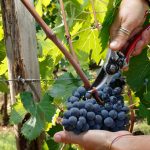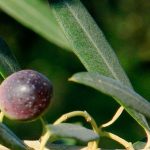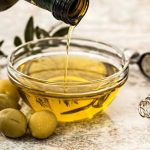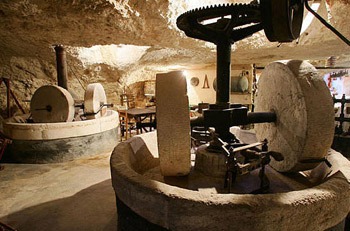 In the previous post we saw that there are many common varieties of olives cultivated in Tuscany. This article will briefly explain how olive oil is obtained. This decisive phase consists of four main steps: grinding, kneading, squeezing and separating. Let’s see what happens at each stage.
In the previous post we saw that there are many common varieties of olives cultivated in Tuscany. This article will briefly explain how olive oil is obtained. This decisive phase consists of four main steps: grinding, kneading, squeezing and separating. Let’s see what happens at each stage.
Grinding – In Latin, “frangis” literally means breaking (the Italian word for Olive press “frantoio” derives from frangis). At this stage, the olives are pressed under the old stone wheel mill or by the modern hammers or disks. By crushing both the pulp and the pits an olive paste is obtained.
Kneading – Consists of a continuous and prolonged mixing of the olive pulp that helps create larger olive oil droplets which facilitates the olive oil separation from the solid substance.
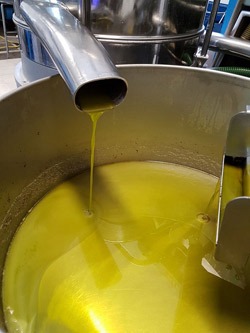 Squeezing (Liquid / Solid Separation) – Once the olive paste is ready, the extraction phase begins and leads to the separation of the three components: pumice (solid residue), vegetation water and extra virgin olive oil. There are several possible methods to perform this last phase. The most traditional system is defined as an “extraction by mechanical pressure” where the paste is placed on vegetable fiber mats that are then stacked with steel disk separators. The disks help evenly distribute pressure on the mats when placed under a press. In the press, and under an increasing pressure over a period of about an hour, an oily liquid component will then drain out (an oily must, composed of oil and vegetation water). Today, a continuous method is more widely used and has replaced the mechanical pressure method. The continuous method uses a centrifuge and exploits the different specific weights of the individual components. The paste – fluidized with the addition of running water – is immersed in large centrifuges and the three components are then separated under high speeds: oil, vegetation water and pumice.
Squeezing (Liquid / Solid Separation) – Once the olive paste is ready, the extraction phase begins and leads to the separation of the three components: pumice (solid residue), vegetation water and extra virgin olive oil. There are several possible methods to perform this last phase. The most traditional system is defined as an “extraction by mechanical pressure” where the paste is placed on vegetable fiber mats that are then stacked with steel disk separators. The disks help evenly distribute pressure on the mats when placed under a press. In the press, and under an increasing pressure over a period of about an hour, an oily liquid component will then drain out (an oily must, composed of oil and vegetation water). Today, a continuous method is more widely used and has replaced the mechanical pressure method. The continuous method uses a centrifuge and exploits the different specific weights of the individual components. The paste – fluidized with the addition of running water – is immersed in large centrifuges and the three components are then separated under high speeds: oil, vegetation water and pumice.
Oil separation / vegetation water – This is the last step. Using the different specific weights of oil and water (oil is lighter than water), it is then possible to separate the oily must. The oil obtained is not perfectly transparent and clean, but slightly turbid, opaque. It is perfectly edible, raw and emanates a very intense scent of olives.





